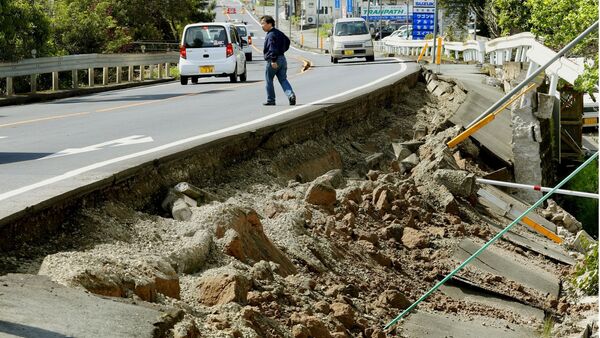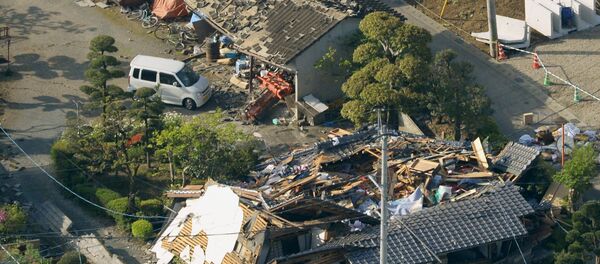TOKYO (Sputnik) — On April 14, a magnitude 6.5 earthquake struck to the east of Kumamoto city on Japan’s Kyushu Island. It was followed by multiple aftershocks. The following day, the same area was hit by a 7.3-magnitude earthquake.
As of Sunday, the death toll from the natural disaster has risen to 48, according to the Kyodo news agency. Over 1,350 people sustained injuries.
Bank of Japan to consider measures for banks in areas hit by the earthquake on Japan’s island Kyushu.
— Russian Market (@russian_market) 23 апреля 2016 г.
— Only there? Not all Japanese banks?
According to the media outlet, the government will cover some 80 percent of the total costs for the recovery of roads and dikes and 90 percent for restoration of agricultural facilities.
Japan is a seismically active region. In March 2011, a 9.0-magnitude offshore earthquake triggered a 46-foot tsunami that hit Japan's Fukushima nuclear power, leading to the leakage of radioactive materials and the shutdown of the plant. The accident is considered to be the world's worst nuclear disaster since Chernobyl.



